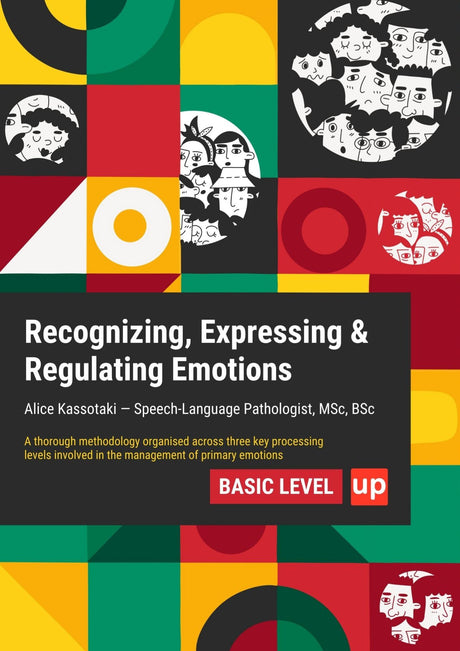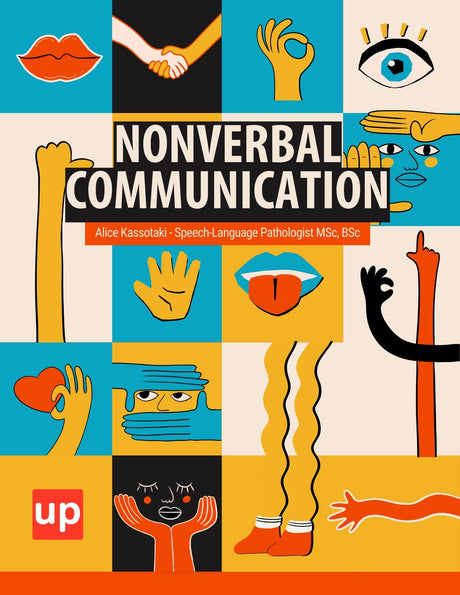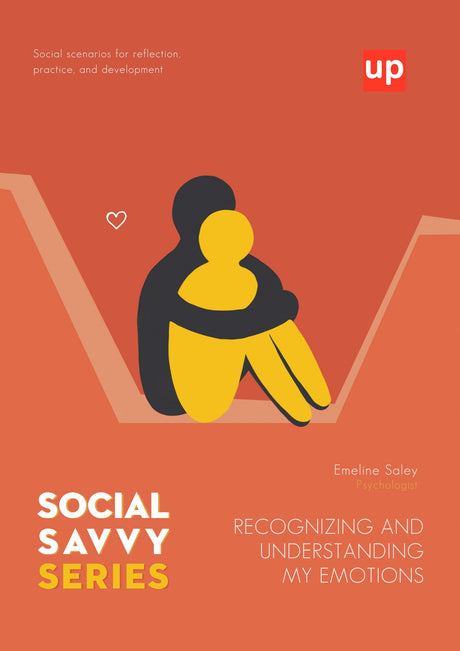Effective communication is the cornerstone of human connection, influencing everything from our personal relationships to our professional success. Yet, we often overlook the specific, practical skills that make this interaction possible. This isn't about mastering complex grammar or building an academic vocabulary; it's about functional language—the ability to use communication to navigate daily life, express needs, and build understanding. When these skills are lacking, the consequences can be significant. In fact, a staggering 86% of employees and executives cite poor collaboration and communication as the primary cause of workplace failures. This guide provides a clear path to mastering essential functional language skills, offering master strategies to unlock profound benefits in your everyday interactions.
Key Points
- Functional language skills are essential for effective communication in everyday life, enabling you to express needs, understand others, and build meaningful relationships.
- Developing both expressive and receptive language abilities, along with mastering social communication rules, forms the foundation for successful interactions.
- Consistent practice, awareness of context, and utilizing both verbal and non-verbal communication strategies significantly enhance your ability to communicate functionally and confidently, ultimately improving communication skills.
Part 1: Understanding Functional Language – The Foundation of Effective Interaction
Functional communication refers to the basic communication skills that enable individuals to express their needs, wants, and feelings, which are essential for independence and social interaction.

Defining Functional Language: Beyond Grammar and Vocabulary
Functional language is the practical application of communication skills in real-world contexts. Functional communication begins in early childhood, typically with gestures, and gradually develops into more complex language use. It’s the ability to use language to achieve a specific purpose, such as requesting information, expressing feelings, giving directions, or solving problems. While grammar and a rich vocabulary are components, functional communication prioritizes the successful exchange of meaning over linguistic perfection. It answers the question, “Can I use my language to get things done?” This focus on purpose is what makes these language skills so vital for independence and social integration.
The Core Elements of Daily Communication
Effective daily communication is a blend of several core elements. Expressive skills allow you to formulate and convey your thoughts, whether through speech, writing, or gesture, with verbal language being a key component alongside non-verbal forms. Receptive skills, primarily listening skills, enable you to understand the messages you receive from others. Pragmatics, or the social rules of conversation, govern how you take turns, interpret tone, and stay on topic. These elements work in concert, forming the bedrock of every successful interaction.
The Profound Daily Communication Benefits
Mastering functional language delivers tangible benefits that ripple through every aspect of life. In addition, developing functional language also strengthens social skills, which are essential for building relationships and effective social interactions. It enhances personal relationships by fostering clarity and reducing misunderstandings. Professionally, strong communication skills are directly linked to leadership potential and team effectiveness. On a personal level, the ability to clearly express your needs and advocate for yourself boosts confidence, reduces anxiety, and promotes greater independence. It is the key to moving from passive observation to active participation in the world around you.
Overcoming Common Communication Barriers
Breakdowns in communication often stem from a deficit in functional skills. These barriers can be internal, such as difficulty organizing thoughts, or external, like misunderstanding social cues. Language delay is another internal barrier, and addressing it may require alternative communication methods or targeted strategies to support effective interaction. The cost of these barriers is not just social; poor communication can have a significant financial impact. For instance, miscommunication costs US businesses an average of $12,506 per employee annually. By identifying and strengthening weak areas in your functional language, you can proactively dismantle these barriers and foster more effective, efficient interactions.
Part 2: The Four Pillars of Functional Language – Speaking, Listening, Reading, and Writing in Action
Speaking Skills: Articulating Your Message Clearly and Effectively
Functional speaking goes beyond just saying words; it’s about conveying your message with clarity and intent. Functional speaking includes spoken speech as well as other expressive forms, such as sign language or gestures, and for some individuals, developing spoken speech can be particularly challenging. This involves coherent speech, logical organization of thoughts, and appropriate pronunciation so that others can easily understand you. It also includes adapting your tone, volume, and pacing to fit the situation, whether you’re having a casual conversation or presenting to a group. Effective speaking ensures your intended message is the one that is received.
Listening Skills: The Gateway to Understanding and Connection
Listening is the most frequently used yet least taught communication skill. Functional listening is an active process that involves more than just hearing sounds. It requires focusing on the speaker, comprehending their words, interpreting non-verbal cues, and retaining the information. Strong listening skills prevent misunderstandings, build trust, and show respect, making them fundamental to forming meaningful connections and collaborating effectively.
Reading Skills: Navigating the Written World Functionally
In our information-driven world, functional reading is essential for daily survival. This skill allows you to understand and act on written information, from reading road signs and medication labels to interpreting work emails and news articles. The need is widespread, as an estimated 54% of U.S. adults aged 16-74 read below a sixth-grade level. Developing the ability to quickly extract key information from text is a critical component of personal and professional autonomy.
Writing Skills: Communicating Effectively on Paper and Screen
Functional writing skills are about conveying information clearly and concisely in written form. This includes everything from composing a coherent email and writing a to-do list to filling out a form or sending a text message. The goal is not literary prose but clear communication. Good functional writing is structured, free of ambiguity, and tailored to the audience, ensuring your message is understood as intended without confusion.
Part 3: Beyond Words – The Multimodal Nature of Functional Communication

Functional communication also plays a crucial role in supporting social interaction, helping children engage with peers and adults in motivating and meaningful ways.
Language Use is Interactive: The Dance of Dyadic Exchange
Communication is rarely a one-way street. It is a dynamic, interactive exchange between two or more people. This "dance" involves turn-taking, responding to feedback, and adjusting your message in real-time based on the other person's reactions. Mastering this interactivity is key to a fluid and successful conversation, transforming a simple monologue into a collaborative and engaging dialogue.
The Power of Non-Verbal Communication
A significant portion of our message is conveyed without words. Body language, facial expressions, eye contact, and gestures provide crucial context and emotional tone. A single gesture can affirm, contradict, or emphasize your spoken words. Understanding and effectively using non-verbal cues—and accurately reading them in others—is a vital layer of functional communication that adds depth and clarity to every interaction.
Context is King: Adapting Your Communication for Any Situation
The same words can have vastly different meanings depending on the context. Functional communication requires you to be a social chameleon, adapting your language use to suit the environment and the audience. The way you speak to a close friend is different from how you address a potential employer. Recognizing these social nuances and adjusting your vocabulary, tone, and level of formality is a hallmark of an advanced communicator.
Part 4: Building Common Ground – Fostering Shared Understanding
Establishing Common Ground: The Bedrock of Effective Communication
Effective communication begins with establishing common ground—a shared basis of knowledge, beliefs, and assumptions. This is the foundation upon which mutual understanding is built. Before you can successfully convey a new idea, you must first connect it to something your communication partner already knows. This involves active listening to gauge their perspective and framing your message in a way that resonates with their experience.
Strategies for Ensuring Mutual Understanding
To ensure your message is received as intended, use active strategies to confirm understanding. Utilizing effective strategies, such as evidence-based practices, can significantly promote mutual understanding in communication. This includes asking clarifying questions (“Does that make sense?”), paraphrasing the other person’s points (“So, what I hear you saying is…”), and providing concrete examples to illustrate abstract concepts. These techniques create a feedback loop that helps identify and correct misunderstandings before they escalate.
The Role of Communication Partners in Collaborative Interaction
Every conversation is a collaborative effort. A skilled communication partner actively works to help you convey your message. They listen patiently, offer encouragement, and ask helpful questions to draw out your ideas. By being a supportive communication partner for others, you not inly improve the quality of that specific interaction but also model the behaviors that foster more effective, collaborative communication from everyone involved.
Part 5: Master Strategies for Enhancing Functional Language Skills

Principles from Pragmatics: The Social Rules of Language
Pragmatics is the study of how context contributes to meaning. To improve your functional skills, focus on key pragmatic principles: take turns in conversation, stay on topic, and be clear and truthful. Pay attention to the unspoken rules of interaction, such as personal space and appropriate topics for different settings. When choosing communication strategies, consider the response effort required—responses that require less effort are more likely to be adopted and used consistently. Understanding these social guidelines makes your communication more effective and socially appropriate.
Actionable Strategies for Everyday Improvement
Improvement comes from consistent practice. Actively work on one skill at a time. To improve listening, practice summarizing what someone has said before you respond. To enhance speaking, try recording yourself to check your pace and clarity. For individuals facing significant challenges, formal intervention through speech therapy can be transformative. A speech-language pathologist can provide a formal assessment and targeted therapy to aid in rehabilitation and skill development. An assessment tool, such as the Communication Matrix, may be used to evaluate functional communication skills and inform tailored intervention strategies.
The Interplay with Cognitive Resources: Focus, Memory, and Problem-Solving
Functional communication is not just about language; it’s deeply connected to cognitive resources. Maintaining focus during a long conversation, remembering key points, and problem-solving when a misunderstanding occurs all require mental energy. Strengthening these underlying cognitive skills through activities like puzzles, reading, and mindfulness can directly support your ability to communicate more effectively in complex situations.
Behavior Analysis and Assessment in Functional Communication
Understanding Communication Behaviors
Behavior analysis and assessment are at the heart of improving functional communication skills, especially for individuals facing communication challenges due to autism spectrum disorder, developmental disabilities, or speech and language delays. By carefully observing and analyzing both verbal and non-verbal communication behaviors, professionals can uncover the reasons behind challenging behaviors—such as aggression, self-injury, or inappropriate communicative behaviors—and identify opportunities to teach more effective communication strategies.
A comprehensive assessment is the first step in understanding an individual’s unique communication profile. This process evaluates receptive language skills (the ability to understand others), expressive language skills (the ability to convey thoughts and needs), and the use of alternative communication methods like sign language, communication boards, or voice output devices. Speech language pathologists play a pivotal role in this process, using their expertise to select the most appropriate assessment tools and to design interventions tailored to each person’s strengths and needs.
Functional communication training (FCT) is a valuable tool that emerges from this assessment process. FCT focuses on teaching functional communication abilities that replace problem behaviors with more appropriate, effective communication. For example, a child who previously used tantrums to express frustration might learn to use a picture exchange communication system, sign language, or a voice output device to communicate their needs instead. These alternative means of communication not only reduce challenging behaviors but also empower individuals to participate more fully in social interactions and daily activities.
Teaching functional communication is not limited to spoken language. Many individuals benefit from augmentative and alternative communication (AAC) strategies, including visual supports, communication boards, and technology-based solutions. These tools provide accessible ways to communicate functionally, especially for non speaking children or those with significant language delays.
Positive reinforcement and response prompting are evidence-based strategies often used alongside FCT to encourage the acquisition and use of new communication skills. By providing immediate, meaningful rewards for appropriate communicative responses, practitioners help individuals build confidence and motivation to communicate effectively.
Ultimately, behavior analysis and assessment provide the foundation for understanding functional communication and developing practical strategies that lead to meaningful interactions. By leveraging comprehensive assessment tools and individualized intervention plans, professionals can help individuals with communication disorders or developmental disabilities achieve their functional communication goals, improve their communication abilities, and actively participate in their communities.
Part 6: Applying Functional Language Skills in Daily Life
Enhancing Relationships: Family, Friends, and Social Interactions
The primary arena for functional language is our personal relationships. Using these skills to clearly express appreciation, resolve conflicts constructively, and actively listen to loved ones builds stronger, more resilient bonds. By communicating your needs and understanding the needs of others, you foster a climate of mutual respect and trust that is essential for healthy, long-lasting connections.
Conclusion
Mastering functional language is an empowering journey that transforms how you interact with the world. It’s about moving beyond the mechanics of language to the art of connection. By focusing on the four pillars—speaking, listening, reading, and writing—and embracing the multimodal nature of communication, you can build a robust skillset for any situation. The key is to start with intentional, everyday practice. Begin by actively listening in your next conversation, pausing to organize your thoughts before you speak, or rereading an email to ensure its clarity. By committing to these small, actionable steps, you will unlock the profound daily benefits of effective communication, enhancing your relationships, advancing your career, and building a more confident and connected life.
Frequently Asked Questions (FAQ) About Functional Language Skills
What are functional language skills?
Functional language skills refer to the practical ability to use communication effectively in everyday situations. This includes expressing needs, understanding others, and engaging in meaningful social interactions.
Why are functional language skills important?
These skills are essential because they enable individuals to communicate their basic wants and needs, build relationships, and navigate daily life successfully. Strong functional language skills also reduce misunderstandings and improve personal and professional interactions.
How do functional language skills develop?
Functional language skills typically begin to develop in early childhood, starting with gestures and simple words, and gradually expanding to more complex sentences and social communication rules. Development may be delayed or different in children with speech and language delays or developmental disabilities.
What can I do to improve my functional language skills?
Consistent practice in speaking, listening, reading, and writing, along with awareness of social context and non-verbal cues, can enhance functional language abilities. Working with a speech-language pathologist can provide targeted strategies and therapy. Using an assessment tool, such as a functional communication profile, helps evaluate communication abilities and guides the development of targeted intervention plans.
Who can benefit from functional communication training (FCT)?
Individuals with speech and language delays, autism spectrum disorder, or those who exhibit challenging behaviors related to communication difficulties can benefit from FCT. It teaches an alternative response as a socially acceptable substitute for problem behavior, providing alternative and effective ways to communicate needs and reduce problem behaviors. FCT can address a range of problem behaviors, including inappropriate sexual behavior.
What are some common methods used in functional communication training?
FCT may involve teaching vocal responses, sign language, picture exchange communication systems (PECS), communication boards, or voice output devices, depending on the individual’s needs and abilities.
It is important to select a communicative response that is both functional and socially acceptable to effectively replace problem behavior. When choosing the form of communication, consider the communicative response topography, such as whether the response is a vocalization, gesture, or use of a device. Prioritize response acquisition by selecting responses that can be quickly learned and are easy for the individual to use. The chosen communication method should be a recognizable form, easily understood by others in various settings. Ensure the alternative response produces the same class of reinforcement as the problem behavior, maintaining the same function. Also, consider response effort—select responses that require less effort than the problem behavior to increase the likelihood of use. The training environment and training settings play a key role in generalizing communication skills, so it is beneficial to teach and practice the communicative response across different environments and with various people to promote skill transfer.
How can I support a child with functional communication challenges?
Encourage the use of alternative communication methods, model desired communication behaviors, provide opportunities for practice, and seek guidance from certified speech-language pathologists for personalized intervention.
Is functional communication only about spoken language?
No, functional communication encompasses various modes, including spoken language, gestures, sign language, and augmentative and alternative communication (AAC) methods, all aimed at enabling effective interaction.
How does improving functional language skills impact behavior?
Enhancing functional communication abilities often reduces frustration and challenging behaviors by providing individuals with appropriate means to express their needs and emotions. A functional assessment can help identify the specific environmental factors that maintain problem behavior, allowing for targeted intervention strategies that address the underlying causes.
When should I seek professional help for communication difficulties?
If a child or adult struggles to communicate basic needs, exhibits significant speech or language delays, or shows challenging behaviors related to communication, consulting a certified speech-language pathologist is recommended for assessment and intervention.
Original content from the Upbility writing team. Reproducing this article, in whole or in part, without credit to the publisher is prohibited.
References
-
American Speech-Language-Hearing Association (ASHA). (n.d.). Augmentative and Alternative Communication (AAC). Retrieved from https://www.asha.org
-
Carr, E. G., & Durand, V. M. (1985). Reducing behavior problems through functional communication training. Journal of Applied Behavior Analysis, 18(2), 111-126.
-
Hanley, G. P., Iwata, B. A., & McCord, B. E. (2003). Functional analysis of problem behavior: A review. Journal of Applied Behavior Analysis, 36(2), 147-185.
-
National Institute on Deafness and Other Communication Disorders (NIDCD). (n.d.). Communication disorders in children. Retrieved from https://www.nidcd.nih.gov
-
Tiger, J. H., Hanley, G. P., & Bruzek, J. (2008). Functional communication training: A review and practical guide. Behavior Analysis in Practice, 1(1), 16-23.
-
Upbility. (2023). The ultimate functional communication skills checklist: Key strategies and tips. Retrieved from https://upbility.net/blogs/news/the-ultimate-functional-communication-skills-checklist-key-strategies-and-tips
-
Wetherby, A. M., & Prizant, B. M. (2002). Communication and Symbolic Behavior Scales Developmental Profile (CSBS DP). Baltimore, MD: Paul H. Brookes Publishing Co.









